
Eriosyce strausiana Photo by: Valentino Vallicelli
Origin and Habitat: Eriosyce strausianaSN|18]]SN|18]] is endemic to Argentina, La Pampa, San Juan, La Rioja, Neuquén, Río Negro and Mendoza. It is common and abundant.
Altitude: 500 to 3000 metres above sea level.
Habitat and Ecology: It grows in monte shrubland and high altitude grasslands, on rocky and sandy soils in gravelly hill and alluvial fans along with Cereus aethiopsSN|7679]]SN|6944]], Echinopsis leucanthaSN|8246]]SN|8246]], Opuntia sulphureaSN|32053]]SN|32053]] and TrichoSN'> 7680' alt='6944'>Cereus candicans#SN#7679'>Tricho[[Cereus candicansSN' style='border:none;'>. In part of the range the species is potentially threatened by agriculture.
7680' alt='6944'>Cereus candicans#SN#7679'>Tricho[[Cereus candicansSN' style='border:none;'>. In part of the range the species is potentially threatened by agriculture.
Synonyms:
See all synonyms of Eriosyce strausiana
Description: Eriosyce strausianaSN|18]]SN|18]], known in older description under the name Pyrrhocactus strausianusSN|25]]SN|25]], is a solitary or slowly clumping cactus with very strong spines. Flowers grow up at the top. Two subspecies are recognized, the nominate form and subsp. pachacoensis (Rausch) Ferryman.
Stem: Globose to to sub-globose or cylindrical as it becomes old, up to 20 cm tall and 8-15 cm in width, dark green to olive green.
Roots: Fibrous from a short tap root.
Ribs: 12 to14 in adult specimens. Obtuse and somewhat notched.
Areoles: Oval, woolly and hairy when young (with yellowish felt), later naked.
Radial spines: 8 to 14 about 25-30 mm long, Mostly curved upward, subulate, base swollen, dark greyish-black or dark horn coloured with black tips. Young spines are almost black (with a dark purple base), while older ones turn grayish.
Central spines: 1 to 8 longer and stouter (approx 30-40 mm long) similar in colour and shape to the radials.
Flowers: 3-4 cm long, 3,5-5 cm in diameter. Apical, broad funnel-form, straw coloured to dirty amber-yellow . Pericarpel and floral tube with wool and bristles.
Fruits: Only about 7-10 mm long, egg-shaped, greenish with thin wall, opening at maturity from a basal pore.
Bibliography: Major references and further lectures
1) David R Hunt; Nigel P Taylor; Graham Charles; International Cactaceae Systematics Group. "The New Cactus Lexicon" dh books, 2006
2) Trevisson, M., Demaio, P., Kiesling, R., Lowry, M., Perea, M. & Méndez, E. 2013. Eriosyce strausiana. In: IUCN 2013. "IUCN Red List of Threatened Species." Version 2013.2. <www.iucnredlist.org>. Downloaded on 17 January 2014.
3) Fred Kattermann “Eriosyce (Cactaceae): The Genus Revised and Amplified” David Hunt, 1994
4) Edward Anderson “The Cactus family” Timber Press, Incorporated, 2001
5) James Cullen, Sabina G. Knees, H. Suzanne Cubey "The European Garden Flora Flowering Plants: A Manual for the Identification of Plants Cultivated in Europe, Both Out-of-Doors and Under Glass" Cambridge University Press, 11/Aug/2011
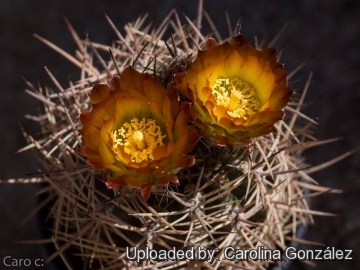 Eriosyce strausiana Photo by: Carolina González
Eriosyce strausiana Photo by: Carolina González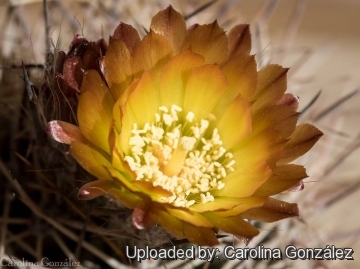 Eriosyce strausiana Photo by: Carolina González
Eriosyce strausiana Photo by: Carolina González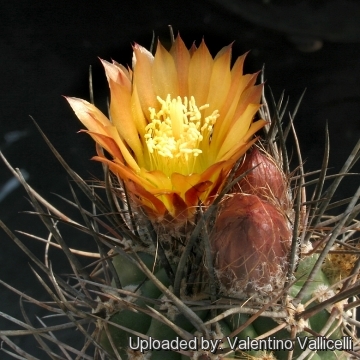 Eriosyce strausiana Photo by: Valentino Vallicelli
Eriosyce strausiana Photo by: Valentino Vallicelli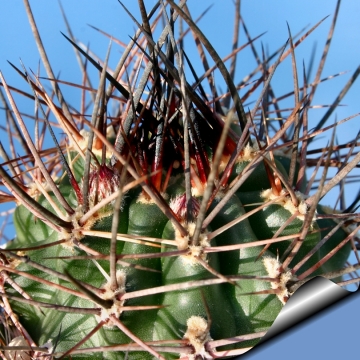 Eriosyce strausiana Photo by: Cactus Art
Eriosyce strausiana Photo by: Cactus Art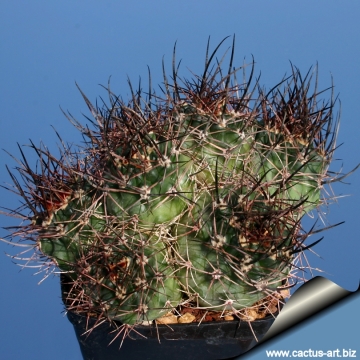 Eriosyce strausiana Photo by: Cactus Art
Eriosyce strausiana Photo by: Cactus Art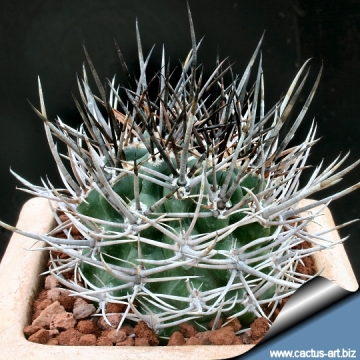 Eriosyce strausiana Photo by: Cactus Art
Eriosyce strausiana Photo by: Cactus Art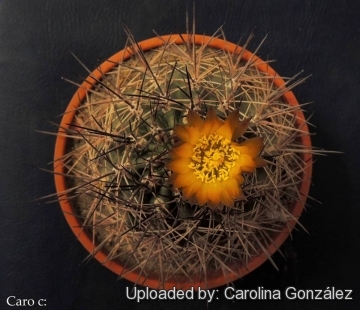 Eriosyce strausiana Photo by: Carolina González
Eriosyce strausiana Photo by: Carolina González Eriosyce strausiana Photo by: Valentino Vallicelli
Eriosyce strausiana Photo by: Valentino VallicelliCultivation and Propagation: This slow growing cactus is kept for the beauty of its form and flowers. It is a summer grower species. Easy to cultivate but somewhat rot prone if kept in a non ventilated place, especially after planting.
Growth rate: Slow-growing and very long-lived. This cactus continues to be, a particular prize among collectors.
Soils: It likes very porous mineral cactus mix soil, but can become too elongated if compost is too rich.
Repotting: This plant needs plenty of space for its roots, repotting should be done every other year or when the it has outgrown its pot. Use pot with good drainage.
Watering: Needs moderate in summer, but do not overwater (extremely rot prone), keep dry in winter at a minimum temperature of 0°C.
Fertilization: Feed with a high potassium fertilizer in summer.
Hardiness: Reputedly resistant to frost if kept on the dry side prior to, and during, cold weather (hardy to -12 C ° C, or less for short periods), but for safe cultivation it is best to avoid freezing temperatures. It need a very good ventilation.
Exposition: The plant tolerates extremely bright situations. Blasting full sun encourages flowering and heavy spine production.
Pests & diseases: It may be attractive to a variety of insects, but plants in good condition should be nearly pest-free, particularly if they are grown in a mineral potting-mix, with good exposure and ventilation. Nonetheless, there are several pests to watch for:
- Red spiders: Red spiders may be effectively rubbed up by watering the plants from above.
- Mealy bugs: Mealy bugs occasionally develop aerial into the new growth among the wool with disfiguring results, but the worst types develop underground on the roots and are invisible except by their effects.
- Scales: Scales are rarely a problem.
- Rot: This species is not easy and accommodating, often suffer of cryptogamic diseases. The main problem with Argentinian pyrrhocacti is the scorching type disease on the apex. This disease seems to be worse on Eriosyce strausianaSN|18]]SN|18]] than the others species, it scorches just some plants, but it doesn't seem to be contagious. Takes a while but they can grow out of it. Root rot is a serious problem with pyrrhocacti if the plants are not watered and “aired” correctly. If they are not, fungicides won't help all that much.
Propagation: Seed or grafting. The seeds germinate with extreme difficulty and a low rate of success. Seedlings did not do well either, and some die each year.
Your Photos

by Cactus Art

by Cactus Art

by Cactus Art





















